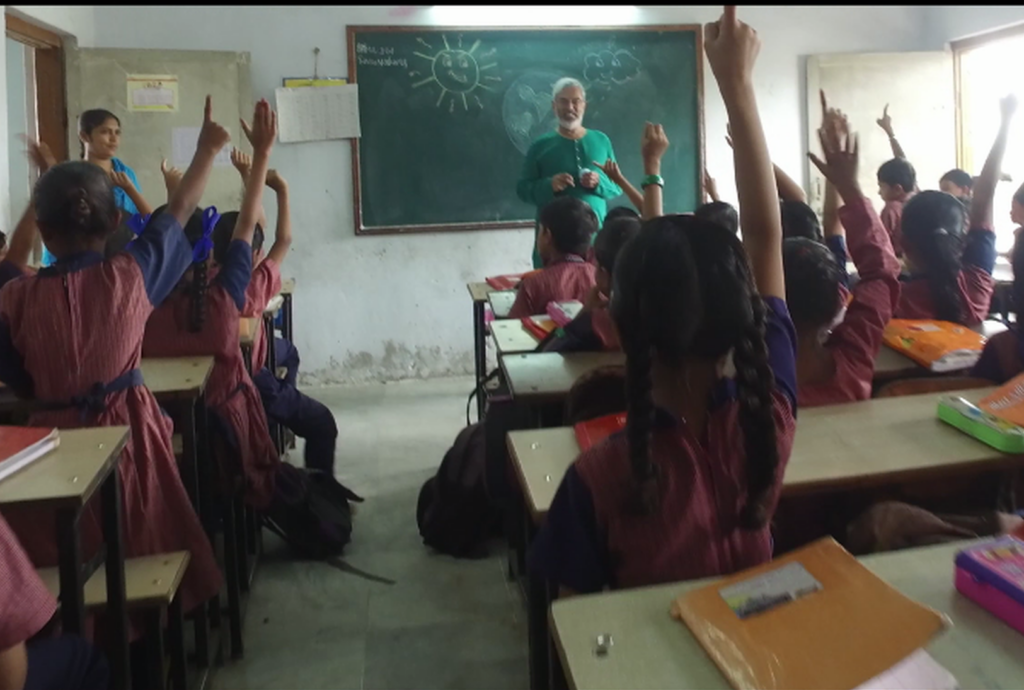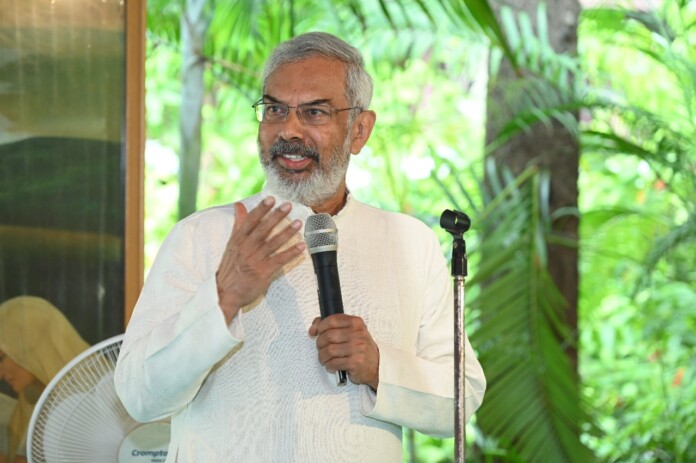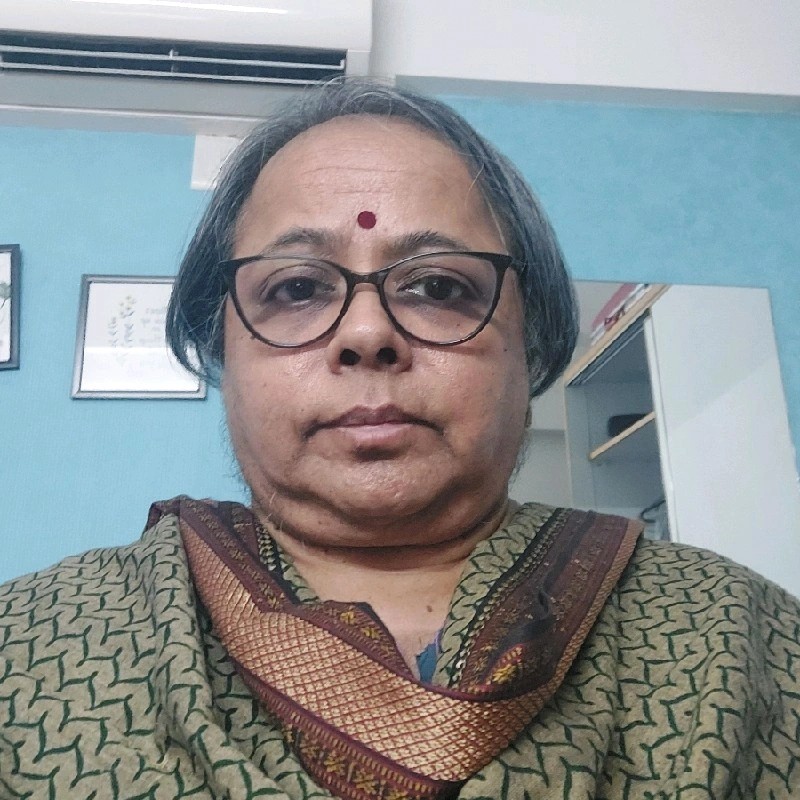Aruna Raghuram chatted up Mr. Sarabhai about his journey as an educator, early influences and how to turn environmental education into a life-long experience. Edited excerpts:
What got you interested in environmental issues?
My parents loved to go on treks, especially my father. My mother would take me to natural history museums. My interest in bird watching, wildlife, and the environment came later. My elder son Mohal would ask me the names of birds in the garden of our Ahmedabad home. I got to hear of Salim Ali at a book fair in Ahmedabad and bought my first bird book.
Once we were successful in greening the NFD campus, we got into social forestry in a major way. We started a project involving local people in reforesting the hills in north Gujarat. I started looking at development from an environmental and sustainability perspective.
Of course, development communication remained a core area for me. The Department of Environment had just been set up in the Department of Science and Technology in Delhi. They gave us a grant to create awareness of urban environmental issues in Ahmedabad. We started a magazine called ‘AmdaVadmA’ in English. It was an iconic magazine in many ways and led to a variety of discussions on the future of the city.
The leading environmental educator is forthright and a fluent communicator. Mr Sarabhai is the founder and director of the Centre for Environment Education (CEE), headquartered in Ahmedabad. He is also among the founders of the South and Southeast Asian Network for Environment Education, he is also the first editor of the Journal of Education for Sustainable Development.
Mr. Sarabhai was awarded the Padma Shri in 2012. Among his earlier accolades is the Tree of Learning Award from the Commission on Education and Communication of the International Union for the Conservation of Nature (IUCN-CEC) in 1998 in appreciation of his contributions to the field of environmental education and communication. The International Advertising Association conferred on him the Olive Green Crusader award in 2013 for creative excellence in communicating sustainability.
He has served on many committees set up by the Ministry of Environment, Forest and Climate Change and Ministry of Human Resource Development of the Government of India, primarily focusing on the greening of India’s formal education system and initiatives for biodiversity education.
CEE, which he founded in 1984, works with over one lakh schools. Its ‘thrust areas’ are education for children, education for youth, industry initiatives, sustainable rural and urban development, water and sanitation, biodiversity conservation and climate change education.
Could you share anecdotes from your childhood that shaped your life and career
I was born in 1947, around 100 days after Independence. I come from a family that was deeply involved in the freedom struggle. Also, a family that was influenced by the thinking of Gandhiji and his concepts of simplicity and trusteeship. For my parents, doing something for the country was a mission. While my father immersed himself in science and institution building, my mother used dance as a medium to focus on social issues.

We were a business family but hardly discussed business at mealtimes. Instead, we would discuss contemporary socio-political issues. Despite all that my parents and the family were doing, my sister Mallika and I never felt pressurized to follow in their footsteps. We were encouraged to follow our passions. But yes, we were influenced by both our parents, their ideas and philosophies.
Tell me about your school and college days.
I studied at Shreyas Foundation, a school set up by my aunt Leena Sarabhai, based on my grandmother’s principles and allied to the Montessori method. One of the strong elements of this school was all of us were involved in cleaning and maintaining the school. We grew up with an appreciation for the dignity of labour.
At home, my father would say let us do homework together. But, whenever I asked him a question, he asked me one back. We had quite the Socratic type of discussion (with a laugh).
I left for Cambridge in 1965 to study BSc and MSc, called the ‘Tripos’ in natural science. I studied physics and mathematics. These were subjects I was keen on and quite good at. I was not yet 18.
How did you get involved in development issues?
In 1967, drought struck Bihar. I came to India in the summer and toured Bihar on state transport buses. The heat was intense. To seek relief from the heat, we used to eat jamuns with salt sold on the roadside. I was fascinated by the voluntary work people were doing during the drought.
That was a turning point in my life. I decided that I wanted to get involved in developmental issues. I did not see myself working in a physics lab. My father encouraged me. But he advised me to complete the program at Cambridge. I took a quick trip to MIT in the USA and found a development communication program. I joined that program after I finished at Cambridge. After a year, in 1968, I joined the PhD program at MIT.
I could not complete my PhD because my father died in 1971, and I had to return to India. My father’s death was a shock, and it completely changed my life. I had to handle many things in India. Some of the institutions he set up were not doing well. The Nehru Foundation for Development (NFD) was an umbrella organization under which the Community Science Centre (CSC), an innovative organization developing new program in science and mathematics education, functioned. This had been set up by my father but was in critical need of funding.
I was also interested in institution building, like my father. Between 1976 and 1984, I started many institutions, notably VIKSAT in 1977, to work on environmental conservation and sustainable development. Then I started Sundarvan, initially a snake park and now a nature discovery centre, in 1979.
Please describe your journey with CEE and environmental education
In 1983, the government was planning to form a Ministry of Environment. We had a dialogue with the officials involved and insisted that environmental education must be a pillar of India’s transformation policy. Just making environmental laws and new technology was not enough. Education, communication and awareness were important.
In August 1984, we were established as a Centre of Excellence of the Ministry of Environment and Forests, in partnership with NFD. Centre for Environment Education (CEE) was born. I became its founder-director.
School programs were at the centre of CEE’s initial activities. We came out with an activity book called the ‘Joy of Learning’. It was translated into several languages. Our Urdu and Bengali editions were adapted by Pakistan and Bangladesh. This book became quite a sensation. Lakhs of copies were distributed. The book showcased how environmental education could be taught through activities. People remember the book as CEE’s introduction to the national stage.
The 1993 and 2003 Supreme Court judgements that environmental education should be made mandatory in India was a huge boost for CEE.
The New Education Policy (NEP) 2020 and the National Curriculum Framework (NCF) 2023 decided on a comprehensive revamp of textbooks. A special textbook for class 10 on environment education was proposed as compulsory for all children in India. I was made the chair of the Curriculum Area Group for environmental education. Our dream of reaching every child in India could now be realised.
Describe some ‘aha’ moments in your mission of environment education
During an experiment with schools in Hyderabad, a few girls from a school came up with the powerful concept of ‘Handprint’ (as opposed to footprint like carbon footprint). The ‘Handprint’ was all about positivity. It was a symbol of what could be done for the environment positively. This symbol was launched at the 2007 UNESCO Conference. It was exciting that a global symbol had originated in an Indian school facilitated by CEE.

I once gave a talk on how educational material should be adaptable. I used the sari as an analogy. The sari is a designed garment that fits everyone because it is adaptable. The final look has as much to do with the sari design as it is the way it is worn. I believe that educational material should be like a sari, a tool in the hands of the teacher. Every teacher brings environmental education alive in his or her own way. This is one of the key philosophies of CEE.
I have always enjoyed teaching. I would teach children mathematics in a village through the Community Science Centre. Aha! moments in teaching are when you figure out why a child is making a certain mistake. Most children don’t make random mistakes. They just use a different logic. I look at children’s learning based on how their logic works. I do not focus on right and wrong. I have demonstrated this in many schools.
Over the years, CEE has trained teachers and created educational material. Our work includes making villages climate resistant. We deal with issues of water and agriculture. In the industry sector, we have a major circular economy program in plastics and textiles.
What are your other interests? Tell me about your family.
I like going out in nature and birdwatching. During the lockdown, we observed and discovered nature around our home. I published a book on ‘Observing Nature in an Urban Forest’. I am a keen photographer.
Cricket was a passion in my childhood. I like to draw and paint. I am an avid listener of Hindustani classical music, folk music and Carnatic too. I used to play the drums as a youngster. I enjoy watching films. My father loved cooking, and so do I. I have an experimental style of cooking; I improvise a lot. I like turning leftovers into something new and tasty.
What are your major messages related to the environment?
The trade-off between development and the environment is not really a trade-off. It is a question of short-term gains versus long-term welfare. Long-term effects of development are seen in climate change and agriculture, among other areas. Sustainable development is what is important.
In 1992, I wrote a line in a report: “The challenge of development is not how to get there but how not to.” It was a reference to the need for India to leapfrog into a sustainable economy rather than follow the classical development path that had been adopted by the West.
One of the best things parents can do to make their child sensitive to environmental issues is to spend time in nature. Camping is a great activity. Seeing a wildlife show on TV is not the same thing. Children remember trips more than classroom lessons.
My dream is that every child in India should go for a nature camp at least once when in school. A second wish is that every child, at least once a year, should eat at least one thing that they have grown themselves. This connects a child to nature and the world around them.
This is an adapted and abridged version of a cover story interview that appeared in Dignity Dialogue in September 2024.
Aruna Raghuram is a freelance journalist based in Bengaluru. She writes on women’s issues, environment, parenting and social enterprises.
Aruna’s previous articles published in SustainabilityNext
School Environmental Education Should be Action-oriented
Water Museum Makes Youth Connect with India’s Water Heritage
Gauri Malik Turns Waste into Profits and Dignity
How Sakshi Kumari Sells ‘Guilt-Free’ Denim
How Chicken Feathers Turn into Wool and Paper
Jaipur Zero Waste Model for India
Saving Seeds is My Life’s Commitment – Vandana Shiva











